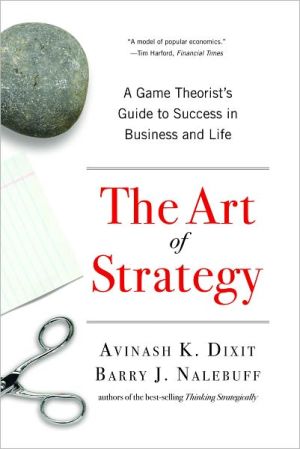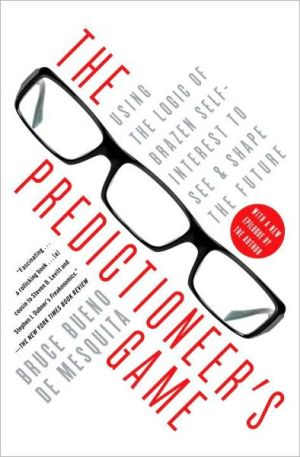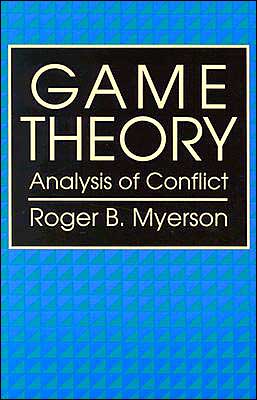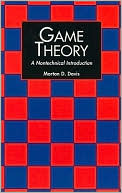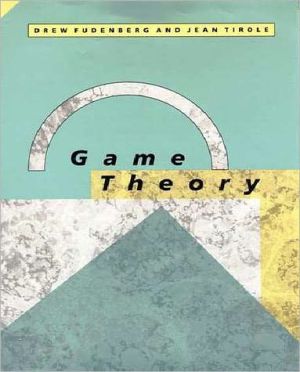Snipers, Shills, and Sharks: eBay and Human Behavior
Every day on eBay, millions of people buy and sell a vast array of goods, from rare collectibles and antiques to used cars and celebrity memorabilia. The internet auction site is remarkably easy to use, which accounts in part for its huge popularity. But how does eBay really work, and how does it compare to other kinds of auctions? These are questions that led Ken Steiglitz—computer scientist, collector of ancient coins, and a regular eBay user—to examine the site through the revealing lens...
Search in google:
"Wow--a rare treat, enjoyable to read and useful for anyone who ever wondered what to do when they crack open the eBay home page!"--Orley Ashenfelter, Princeton University"There is a wealth of interesting detail about how eBay actually works in practice, along with lessons to be drawn from the theory. Graduate students in economics and allied fields will see this book as a very nice reader were they thinking of doing research in the area of auctions in general and eBay in particular. Steiglitz offers a useful gateway for those interested in delving deeper into this topic area. The book is invaluable for instructors looking to offer a course on electronic auctions."--John Morgan, University of California, Berkeley"Steiglitz is uniquely positioned to discuss eBay--as a computer scientist, an aficionado of eBay and auctions for rare coins, and someone well versed in auction theory. The book is peppered with vivid examples and first-person tales. The main theme throughout is that real-world bidding behavior and prescriptions for auction design differ sometimes quite markedly from that predicted by classic auction theory. Steiglitz's approach is pragmatic: what does the empirical evidence reveal about how people bid on eBay, and which kinds of auctions are best for sellers? Most notably, the author provides behavioral explanations for commonly observed behavior on eBay, such as sniping, as well as anecdotal evidence about bidding rings and other seller manipulations."--David C. Parkes, Harvard University D.F. Sheets - Choice In this interesting, well-written book, Steiglitz summarizes the basic literature on auction theory, with particular emphasis on eBay auctions...It will...be of interest to anyone who wants a basic introduction to auction theory or who uses eBay.
Preface xiiiTo the general reader xiiiTo students and course instructors xivSynopsis xvAcknowledgments xixEnglish and Vickrey Auctions 1Auctions 1A Brief History 5English Auctions 8Variations on the English Theme 10Truthful Bidding is Dominant in (Japanese Button) English Auctions 12Sealed-bid Second-Price (Vickrey) Auctions 14Mail-bid Auctions 16Weak Strategic Equivalence of (Japanese button) English and Vickrey Auctions 17The Four Standard Auctions and Why They Are Two Pairs 18Disincentives to truthful bidding 21Questions 22From Vickrey to eBay 25eBay as an Evolutionary Product of Vickrey: The California Auction 25Other Online Auction Rules 28eBay [not equal] Vickrey 30Summary 32Questions 32eBay Strategies Observed 34Some Bidding Histories 34Start and End Clustering, Snipers 34A Bidding War 36An Early Bidder andHer Fate 38"Enter Your Maximum, Then Sit Back and Watch!" 39Good Reasons to Snipe 40Other (Generally Good) Reasons to Snipe 43Bidding Wars, Response to Incremental Bidding 43Implicit Collusion 44Nonstrategic Reasons to Bid Late 45Some (Questionable) Reasons to Bid Early 46Uncertain Values and the Cost of Discovery 46Scaring Away Competition 47Nonstrategic Reasons to Bid Early 50On Balance, Snipe 51Seller Choices 51Opening Bid 52Use of a Secret Reserve 54Use of the Buy-It-Now Option 56Other Seller Choices 57The Next Three Chapters 60Questions 61What If eBay Were First-Price? 65First-Price Is the More Natural Assumption 65The Sealed-Bid First-Price Auction 66The Simplest of All Worlds 67The Independent Private Values (IPV) model 67How to Shade 71Revenue: The Bottom Line 73A First-Price eBay Would Discourage Early Bidding 74First-Price Is More Work for the Bidder 75Further Theory Disappoints 76Conclusion 77Questions 78The Signals that Sellers Send 79Reserves 79Price Estimates and Related Revelations 81Virtue Rewarded, in Theory 83Art, Silver, and Jewelry Auctions: Empirical Observations of Seller Price Estimates 86The Complexity of the Seller's Signaling 88What Theory Has To Say About Reserves 90The Tradeoff in Second-Price Auctions 91The Tradeoff in First-Price Auctions 91The Optimal Reserve 92The New Equilibrium 92Practical Implications 94Field Experiments 95A Field Comparison of Public vs. Secret Reserves on eBay 99Lucking-Reiley's Magic Window in Time 100Field Confirmation of Some First-Price Theory 101Flatness of Revenue vs. Reserve Curves 102The Importance of the Extra Bidder 104Extracting Some Advice for the eBay Seller 105Questions 107Prices! 108Appraising the Scaffolding 108Valuations 109Equilibrium 111Homo economicus 111Overbidding: Some Classroom Experiments 112Experiment 1: First-price with Uniformly Distributed Valuations 113Experiment 2: First-Price with Less Competition 114Feedback and Learning 116Feedback in First-Price Auctions 117Feedback in Second-Price and English Auctions 117Overbidding: Jars of Nickels 118Results from the Field: Tests of Revenue Equivalence 120Magic on the Internet: A Surprise 121Music CDs and Xboxes on eBay 123Reconciliations 125Equilibrium Regained 125Risk Aversion 126Spite: An Alternative Theory 130The Theoretically Informed (and Human) eBay Bidder 134Simply a Mistake: Bidding Untruthfully in Vickrey's Setting 135The Winner's Curse 135Lessons from the Failures of Revenue Equivalence 137Spiteful Behavior 138Wars, Frenzies, and Bubbles 140Questions 147Transgressions 150Shills 150Shill Bidding and Theory 155Mock Auctions: The More Important Diamond 157Bidder Rings: 84 Charing Cross Road 158Ethics 162The Twinge of Guilt: The Buyer Withholds Information 162Conversely: The Seller Withholds Information 163Sniping 164Shadowing Bidders 164The Ethics of Feedback 165Exporting and Importing Ancient Artifacts 166A Note on Downright Fraud 168Fakes 169Questions 173Epilogue 174Looking Back 174Looking Ahead 176Vickrey's Genesis 179Introduction 179A Preview of Revenue Equivalence 180Quick Review of Some Probability Theory 183Order Statistics 185Revenue of Second-Price Auctions 188First-Price Auctions and Nash Equilibria 189Revenue Equivalence of First-and Second-Price Auctions with Uniformly Distributed Values 190A Nash Equilibrium for First-Price Sealed-Bid Auctions 192Revenue of First-Price Auctions 197Conditional Expectation 198An Interpretation of First-Price Equilibrium Bidding Strategy 200Stronger Revenue Equivalence 200Dutch Auctions and Strategic Equivalence 202Another Kind of Auction-the All-Pay Auction 203Questions 205Riley and Samuelson's Optimal Auctions 207Definition of Riley and Samuelson's Class 207Revenue 208Optimal Reserve Price 211Example: First-Price Auction with Reserve 213Example: Second-Price Auction with Reserve 215Sad Losers and Santa Claus 216The Sad-Loser Auction 217The Santa Claus Auction 219The All-Pay Auction Revisited 222Risk Aversion 224Point of Departure 227Questions 227Myerson's Optimal Mechanisms 230Directions 230Interdependent Values 231Asymmetric Bidders 235Efficiency 236Myerson's Optimal Mechanism in the Asymmetric-Bidder Case 239Interlude: Revenue Equivalence Revisited in the Asymmetric-Bidder Case 242The Optimal Allocation Rule 244The Payment Rule 247A Wrinkle 248Is This Practical? 248Optimal Riley and Samuelson Auctions Are Optimal Mechanisms 249Auctions vs. Negotiations 249Summary 252Questions 253Laboratory Evidence: A Summary 254Introduction 254Laboratory Experiments 255Experimental Results for the IPV Model 256Experimental Results for the Common-Value Model 259References 263Index 271
\ MAA ReviewsGeneral readers interested in either behavioral economics in general, or auction behavior in particular, will find Snipers, Shills, and Sharks to be entertaining and informative read. Naïve users of eBay will find it particularly useful since, as Steiglitz points out, many otherwise well-educated and informed people do not truly understand how the system works.\ — Sarah Boslaugh\ \ \ \ \ New Scientist\ - Mark Buchanan\ The book does a lot more than just explain why eBay works the way it does, however. As promised in the subtitle, Steiglitz also explores the quirks of human behavior in auctions, both on eBay and elsewhere, which have as much to do with psychology as with brute economic logic. . .. Steiglitz's book is an admirable achievement: a short, readable account of the economic theory of auctions that doesn't pound the reader into stupefaction with equations or some of the other dry-as-bones notions economists often invoke.\ \ \ Choice\ - D.F. Sheets\ In this interesting, well-written book, Steiglitz summarizes the basic literature on auction theory, with particular emphasis on eBay auctions...It will...be of interest to anyone who wants a basic introduction to auction theory or who uses eBay.\ \ \ \ \ The Business Economist\ - Mark Williams\ What Steiglitz does well is discuss the quirks of eBay. He himself is a regular user and this allows him to comment with some authority upon the many different patters of observed behaviour...This is an interesting book, providing a fascinating insight from an important real-world auction market, and this will provide motivation to delve deeper into the subject to many a non-expert reader.\ \ \ \ \ MAA Reviews\ - Sarah Boslaugh\ General readers interested in either behavioral economics in general, or auction behavior in particular, will find Snipers, Shills, and Sharks to be entertaining and informative read. Naïve users of eBay will find it particularly useful since, as Steiglitz points out, many otherwise well-educated and informed people do not truly understand how the system works.\ \ \ \ \ New ScientistThe book does a lot more than just explain why eBay works the way it does, however. As promised in the subtitle, Steiglitz also explores the quirks of human behavior in auctions, both on eBay and elsewhere, which have as much to do with psychology as with brute economic logic. . .. Steiglitz's book is an admirable achievement: a short, readable account of the economic theory of auctions that doesn't pound the reader into stupefaction with equations or some of the other dry-as-bones notions economists often invoke.\ — Mark Buchanan\ \ \ \ \ ChoiceIn this interesting, well-written book, Steiglitz summarizes the basic literature on auction theory, with particular emphasis on eBay auctions...It will...be of interest to anyone who wants a basic introduction to auction theory or who uses eBay.\ — D.F. Sheets\ \ \ \ \ The Business EconomistWhat Steiglitz does well is discuss the quirks of eBay. He himself is a regular user and this allows him to comment with some authority upon the many different patters of observed behaviour...This is an interesting book, providing a fascinating insight from an important real-world auction market, and this will provide motivation to delve deeper into the subject to many a non-expert reader.\ — Mark Williams\ \

